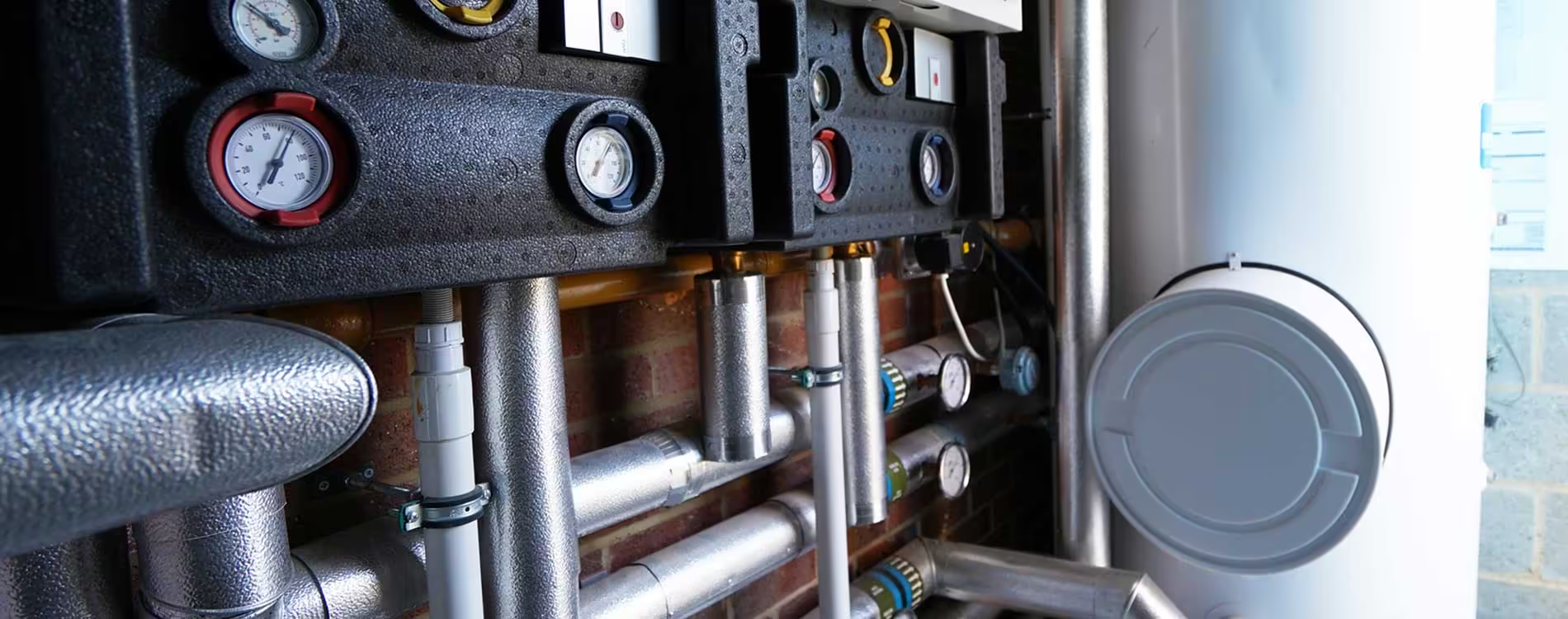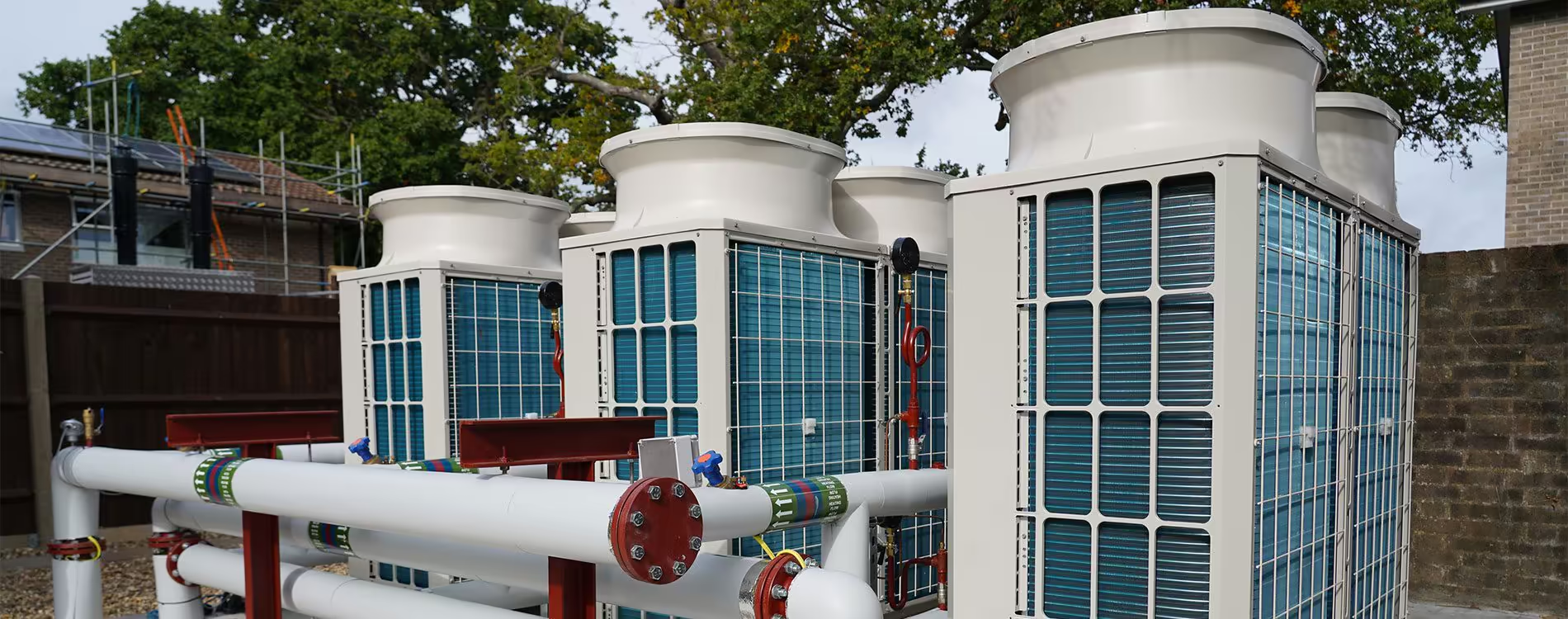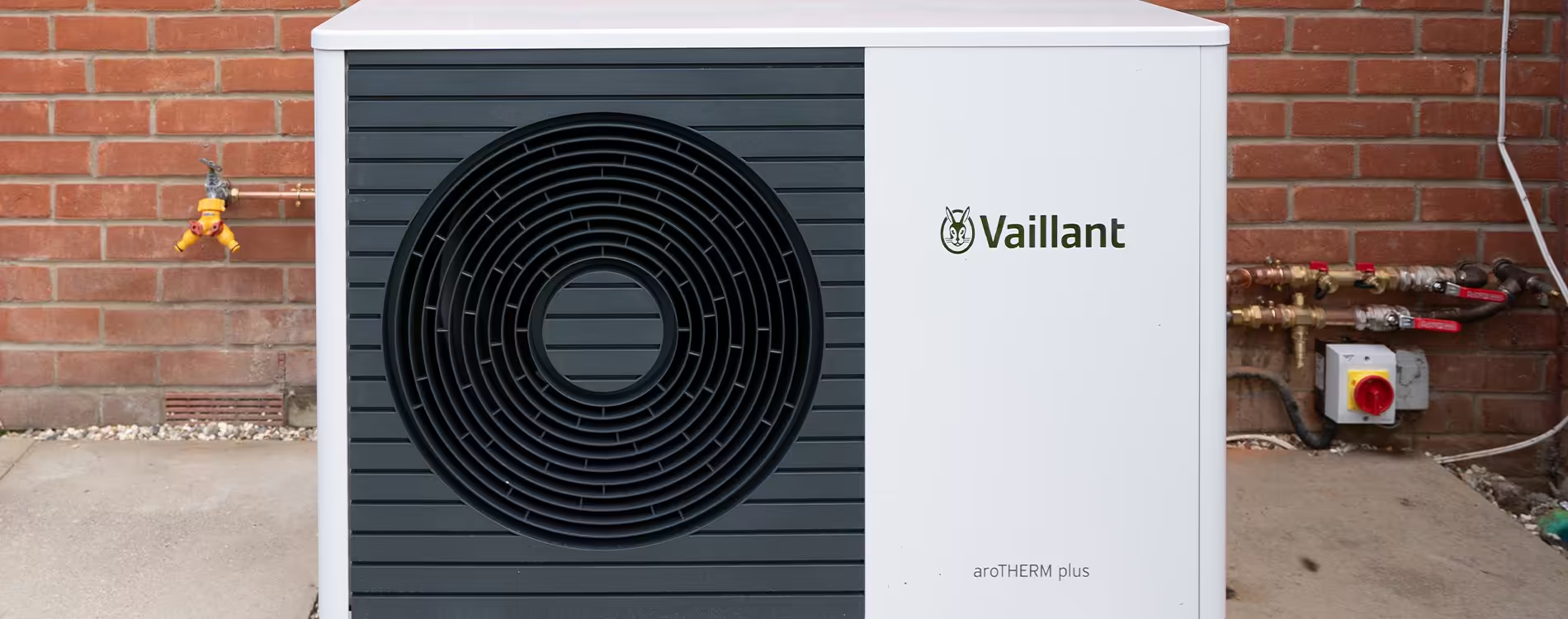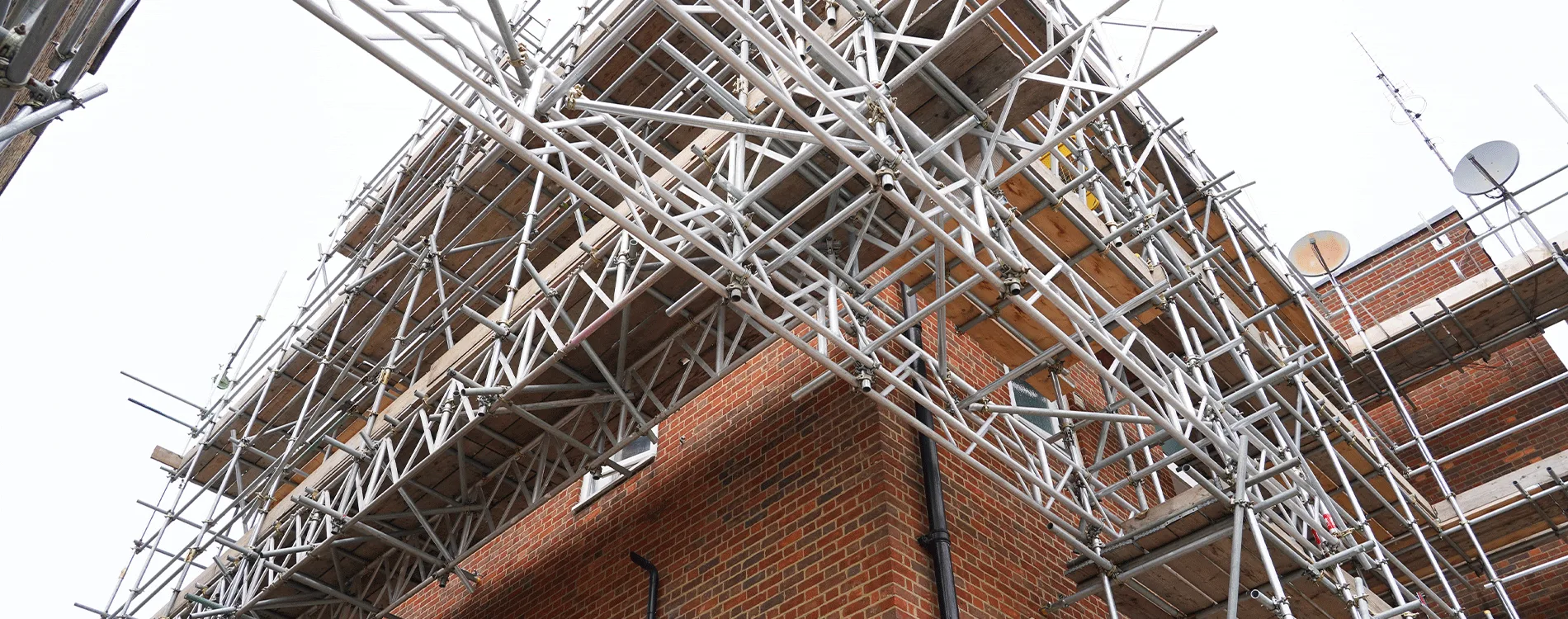Decarbonisation
Energy efficiency measures for Net Zero goals
Fabric First Approach
Enhancing insulation, roofing, and energy-efficient windows and doors to improve building performance, reduce heat loss, and create warmer, healthier homes.
Solar & Renewable Power Solutions
Reduce reliance on fossil fuels by installing solar PV and renewable energy solutions which lower energy costs, reduce carbon emissions, and support net zero goals.
Low-Carbon Heating Systems
Efficient heating systems like air source heat pumps, solar thermal or condensing boilers which reduce carbon emissions while ensuring reliable, cost-effective heating and hot water.
Ventilation Systems
Our MVHR ventilation systems improve air quality, prevent mould and damp, promote wellbeing, and boost energy efficiency by lowering heating needs.
Intelligent Energy Controls
Boost building performance with smart systems that monitor energy usage, reduce waste and improve operational efficiency.
Featured Project
Pilot Retrofit Project, Conversion and Refurbishment
Decarbonisation
Axis’ Pilot Retrofit Project, which included conversion and refurbishment works, created a family home for Westminster City Council.

Latest Projects
Have a project to discuss?
Make an enquiry and we’ll be in touch as soon as possible.
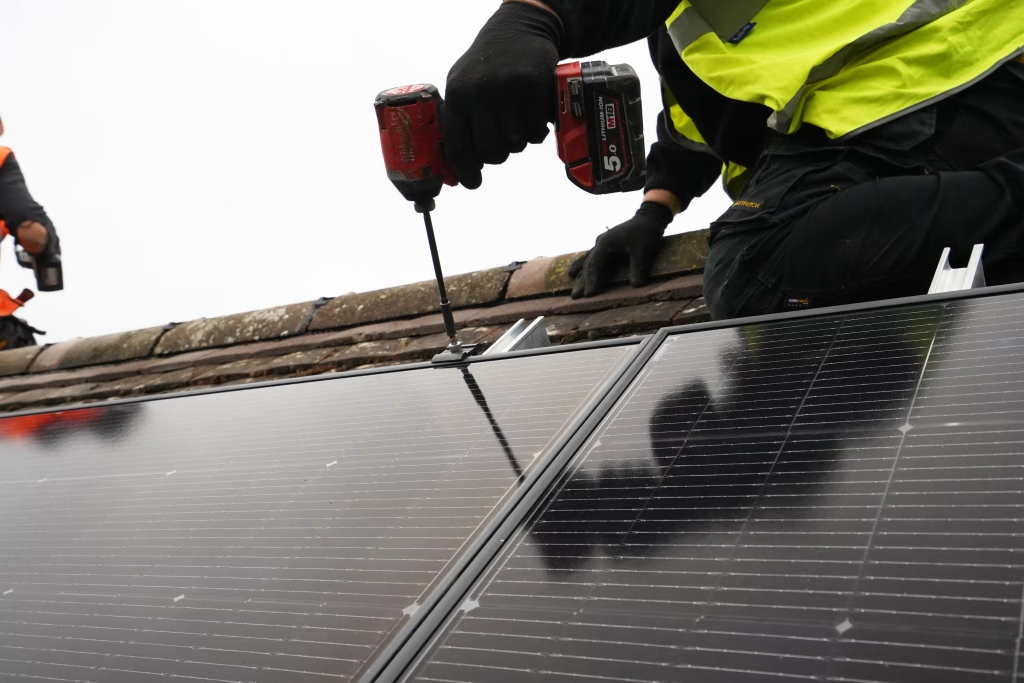
News & Insights
Download Our Latest Decarbonisation Brochure
Discover our decarbonisation solutions that help reduce emissions, improve energy efficiency, and futureproof your buildings.
Decarbonisation FAQs
What does decarbonisation in construction mean?
Decarbonisation in construction refers to the process of reducing carbon emissions associated with a building. This includes energy-efficient designs, renewable energy solutions and sustainable materials.
Energy efficiency measures such as electrifying heating systems, replacing gas boilers with heat pumps, and integrating modern, smart technologies aim to lower energy consumption and greenhouse gases, helping you achieve Net Zero by 2050.
What does decarbonisation and retrofit services mean?
Decarbonisation and retrofit services involve upgrading existing buildings to enhance energy efficiency and sustainability to reduce carbon emissions.
This can include installing insulation, double-glazing, solar PV and upgrading heating systems.
At Axis, our decarbonisation and retrofit services enhances environmental performance, helping you meet Net Zero targets while boosting energy efficiency.
What energy efficiency measures (EEM) does Axis install?
Axis EEM installations:
- Air Source Heat Pumps (ASHPs)
- District Heat Networks (DHN)
- Electric Heating Systems
- Electric Vehicle (EV) Charging Point Installations
- Energy-Efficient Windows and Doors
- Insulation: External Wall Insulation (EWI), Re-Cladding Solutions, Insulation Solutions (loft, cavity wall, internal wall)
- Solar PV Panel Systems
- Ventilation Systems
What is a Retrofit Co-Ordinator and the importance of decarbonisation in construction?
Retrofit Co-ordinators play a vital role in delivering energy-efficient upgrades in housing, ensuring compliance with PAS 2035 and funding criteria. They manage risk, quality, and stakeholder engagement, which is key to achieve safe, sustainable decarbonisation. Within Axis’ team, this includes qualified Retrofit Co-ordinators and Assessors.
How can retrofitting properties help landlords align with the UK’s Net Zero goals?
Retrofitting buildings improves energy efficiency and reduces carbon emissions which falls under supporting the UK Government’s Net Zero strategy. By integrating energy-efficient solutions such as insulation, solar panels and low-carbon heating, landlords can lower energy use, enhance EPC ratings, and comply with environmental standards.

Get In Touch
Have questions or want to learn more? We’d love to hear from you. Contact us via phone, email, or our form.
| 020 756 42100 | |
| info@axiseurope.com |
Thank you! Your form has been successfully submitted. Someone will be in touch with you soon.
Error sending form.








